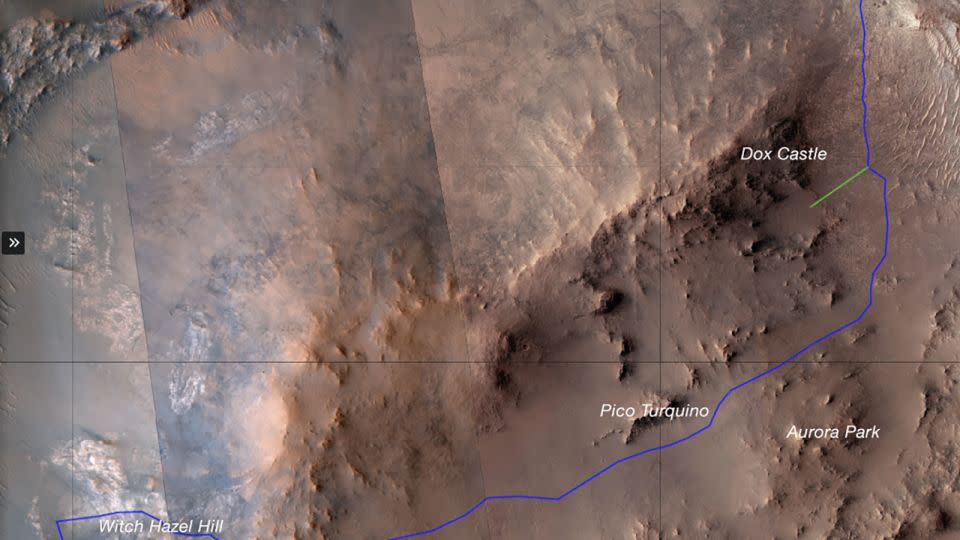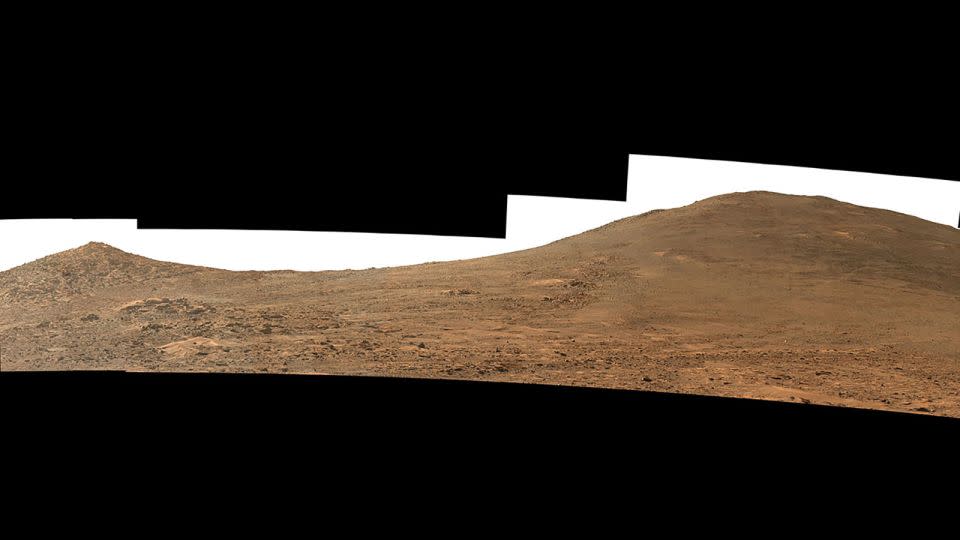Sign up for CNN’s Wonder Theory science newsletter. Explore the universe with news about fascinating discoveries, scientific advances and more.
The Perseverance rover has begun a long climb up the steep slope of Jezero Crater with the aim of exploring some of the oldest rocks on Mars and the potential for environments that may have once hosted life on the red planet.
The robotic rover, which landed in Jezero Crater 3.5 years ago, has since explored the site of an ancient lake and river delta and collected scores of rock samples, but its latest scientific journey could rewrite the way astronomers understand Mars.
“Perseverance has completed four science missions, collected 22 rock cores, and traveled more than 18 unpaved miles (29 kilometers),” Art Thompson, Perseverance project manager at NASA’s Jet Propulsion Laboratory in Pasadena, Calif., said in a statement. “As we begin the Crater Rim Expedition, our rover is in excellent condition, and the team is eager to see what’s under the sun.”
The rover will follow a route planned by the rover’s engineers using automated navigation capabilities that allow Perseverance to operate like a self-driving car. The route will allow the rover to avoid hazards during the challenging climb. Perseverance will gain about 1,000 feet (300 meters) of altitude when it reaches the top of the rim toward the end of 2024.
This climb is something scientists have been anticipating for years, long before Perseverance landed on Mars.
About 4 billion years ago, some kind of object slammed into Mars, creating the Jezero Crater, and the impact threw huge blocks of rock into the air that got stuck at the mouth of the crater.

“We need to be able to access and sample some of the oldest rocks on Mars at the crater rim,” said Briony Horgan, a professor of planetary science at Purdue University in West Lafayette, Indiana, and co-investigator of the Perseverance exploration mission.
“We think these include everything from ancient sedimentary rocks that may preserve the earliest habitable environments on Mars to the building blocks of the planet that formed the earliest crust at the dawn of the Solar System.”
The crater rim could offer a window into the earliest period of Mars’ history and reveal evidence of hot springs that may have supported ancient microbial life, Horgan said.
Turning back Mars time
The impact that formed Jezero Crater also produced a lot of heat, partly from the energy of the object hitting Mars. Some of the heat also came from hotter rocks beneath the Martian surface, as the planet was still cooling after forming half a billion years ago. The impact churned up these rocks from beneath the Martian surface.
If there had been underground or surface water on Mars at that time, which scientists think is likely, hydrothermal systems would have existed, said Ken Farley, a Perseverance Project scientist and professor of geochemistry at the California Institute of Technology.
In hydrothermal systems, hot water likely circulated through cracks in rocks, creating a suitable environment for microbial life to thrive.
Perseverance has so far investigated the location of ancient lake beds and river deltas where life might have existed. A crater rim area where hydrothermal rocks are called Pico Turquino offers another, different possibility.
“The overall mission goals are very important in looking for evidence of possible life on Mars, so we want to explore as many of the potentially habitable environments that Mars has to offer,” Farley said.
The science team is also eager to reach Witch Hazel Ridge, a large outcrop of layered black-and-white rock that stretches for hundreds of metres. These layers of rock may hold information about Mars’ climate billions of years ago. The rover is expected to get there in six to nine months.
Although plate tectonic movements and other erosive processes have erased some of Earth’s oldest rocks, ancient rocks that encode Mars’ history still persist on the red planet.
The Solar System formed 4.55 billion years ago, and the science team expects to find and study Martian rocks that are 4.2 billion years old, Farley said.
Ascent of the crater
During the long drive toward the crater wall, Perseverance may encounter slopes that are about 23 degrees in angle. The team generally avoids any route that would tilt the rover more than 30 degrees. But the rover is well prepared for the climb and is not in any danger, Farley said.
“Climbing to the crater rim is a bit of a challenge for us, but from a rover’s perspective it’s not really that big of a deal,” said Steven Lee, Perseverance’s deputy project manager.


However, the rover’s progress could slow if it feels its wheels slipping on the Martian surface or if it encounters large rocks during the climb.
Perseverance will be able to monitor the terrain while driving, and if its wheels slip too much, the rover will stop and “let mommy know, wait to be told what to do, and we’ll figure it out on the ground,” Lee said.
Lee said the rover was in excellent condition and “there are no obstacles that would indicate that we cannot continue to operate the rover for many more years.”
By the time the rover reaches the top of the ring, it will have traveled tens of kilometers more and will have captured tons of new images for the mission team to analyze.
“It’s a unique perspective for those of us working on the project on a daily basis,” Lee said. “You soon start to perceive Mars as a place. My memories of Perseverance’s flybys are very much like memories of a walk. I can really think about what Mars was like from the landing site to where we are today.”
Additionally, the rover’s perspective on the 45-kilometer-wide crater will offer spectacular views.
“As we look back from Jezero and out to the plains beyond, we will see some absolutely magnificent views,” Horgan said.
The biggest challenge for the science team will be determining which rocks to examine up close, as well as which ones to collect samples from. With such intriguing school-bus-sized boulder piles, the team will have to learn as much as they can while moving the rover around.
“All of these things will be laid out in front of us,” Farley said, “so I think it’s going to be a very different kind of discovery.”
The team anticipates that Perseverance will spend at least a few years collecting samples beyond the crater rim.
Meanwhile, as NASA reassesses its Mars Sample Return program, the question of how to get the samples Perseverance collects in the crater back to Earth is looming. The agency is considering different proposals and is expected to make a decision in the fall.
Because the vehicle is responsible for delivering samples to a spacecraft for return to Earth, the decision could determine how far and for how long the rover goes.
“This part of the mission is essential to creating a sample collection, which is everyone’s dream collection,” Farley said. “For now, we’ll just continue our crater rim exploration. And when the time comes, we’ll do everything we need to do to support Mars Sample Return.”
For more CNN news and bulletins, create an account at CNN.com